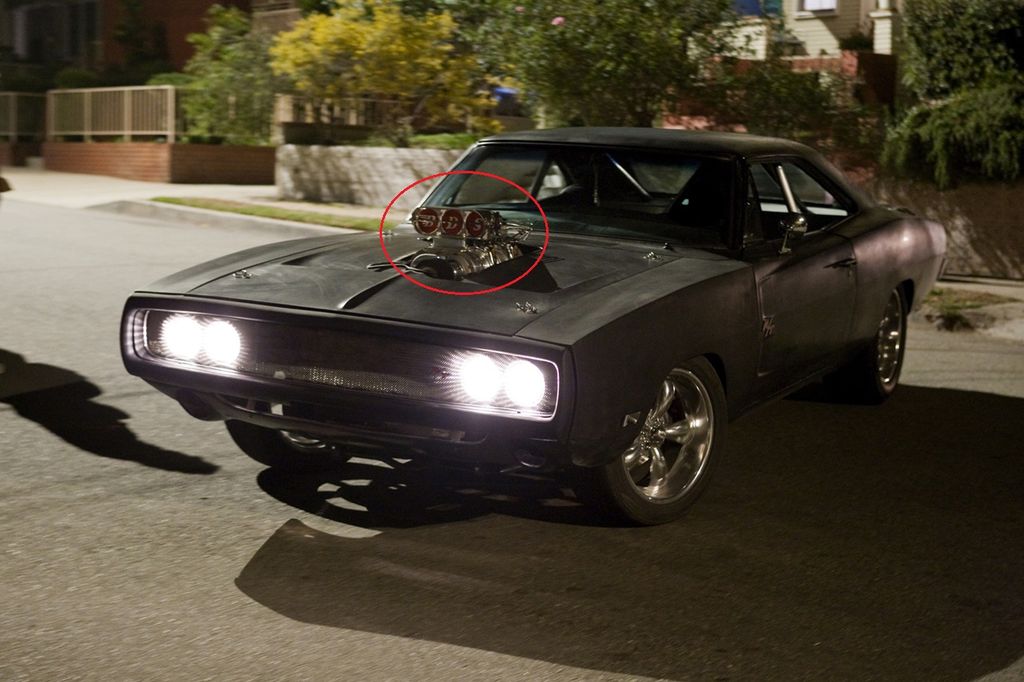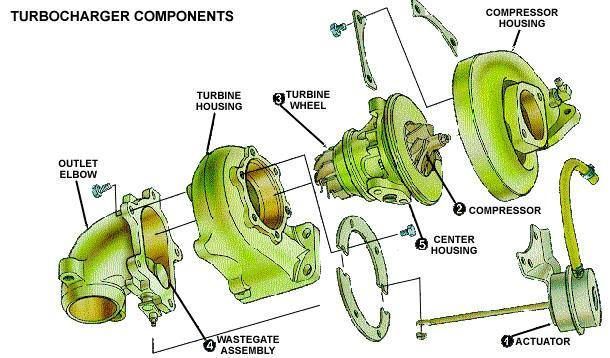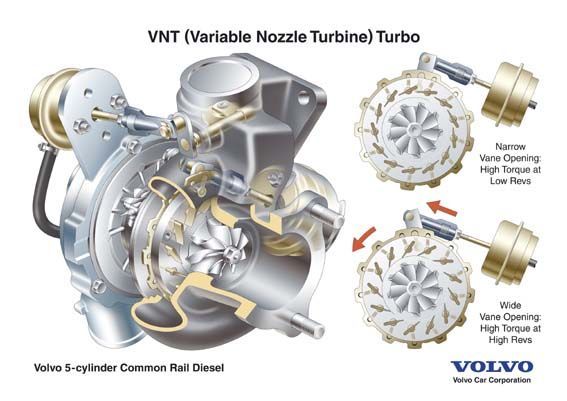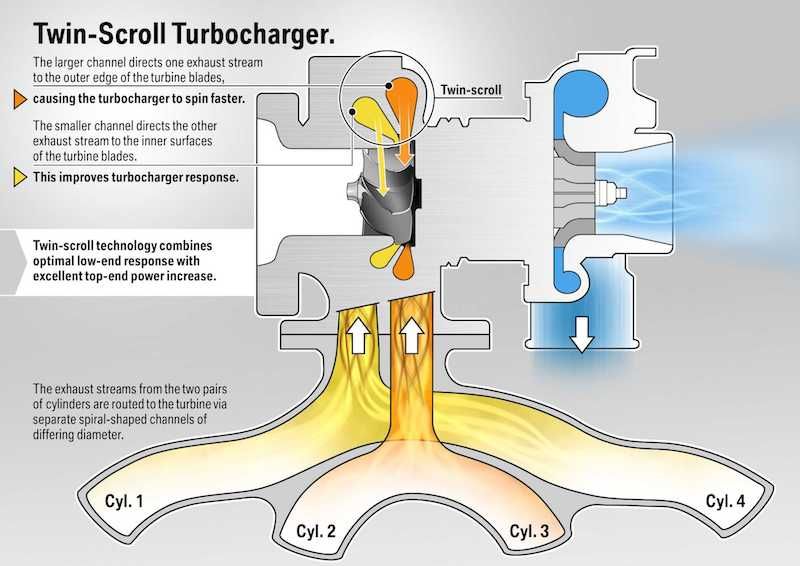Turbocharger - Its Types And Working
Aug 10, 2019 • 450 views
Quite a few of us have heard the term ‘turbocharger,’ either when checking the specifications of our favourite sports car, or when browsing through the catalogues of a new truck or car we intend on purchasing, or when reading articles about technologies used in race cars. Turbochargers and superchargers, commonly known as engine boosting systems, serve one purpose, to increase the amount (mass) of air supplied to the cylinders for combustion, allowing for more fuel to be injected, thereby increasing the power output of the engine.
Superchargers are commonly fitted as a performance mod on most vehicles that race on drag strips or most commonly, on Muscle cars. Most of you would have seen Toretto’s 1970 Dodge Charger R/T in the Fast and Furious series (yeah, the one which he loves crashing; it actually makes you want to double-check the definition of ‘Muscle’ cars). The supercharger is that metal block like thing on the hood of the car.

Toretto's 1970 Dodge Charger R/T - Source : jalopnik.com
A supercharger is an air compressor that uses the rotational motion (energy) of the crankshaft, by means of a belt or chain, to send in denser air to the intake manifold. This means, there is a larger mass of air for combustion, meaning more fuel can be injected, which gives you more power. Since it uses the energy of the crankshaft to compress the air, a small amount of useful energy is lost (similar to how there is power loss when the AC is turned on). But the energy that is generated in turn, is quite large, which makes this energy loss inconsequential when it comes to quarter-mile races.
History of engine-boosting.
Initially, engine boosting focused on superchargers. However, due to the drawbacks of superchargers, and the need for harnessing the energy lost due to the exhaust system, turbochargers were invented. The first turbochargers were used in large marine engines. Later, turbochargers came to be used in aircrafts. It was only later, that turbochargers were used in automobile engines.
Who invented turbochargers?
The turbocharger was invented by Swiss engineer Alfred Büchi. He received a patent in 1905 for using a compressor driven by exhaust gases, to compress and deliver air into an internal combustion engine to increase its power output.
So, what exactly is a turbocharger?

Turbocharger - Source : www.pacperformance.com
Basically, a turbocharger is a supercharger that uses a turbine powered by the engine’s exhaust gases, instead of the crankshaft, to compress air. We all know that, theoretically, an IC engine is capable of converting only 35% of the energy generated from combustion into useful work. The remaining energy is lost to various systems as shown below.

Fuel energy distribution in an IC engine - Source : www.researchgate.net
A turbocharger focuses on converting a part of the 30% of energy lost to the exhaust system, into useful work. Energy loss in the exhaust system is in terms of heat and kinetic energy of the exhaust gases. The heat energy can be recovered using EGHR (Exhaust Gas Heat Recovery) or TEG (ThermoElectric Generator) systems. Whereas, a part of the kinetic energy lost, can be recovered using a turbocharger.

Turbocharger parts - Source : www.brighthubengineering.com
What does a turbocharging system contain?

Turbocharger diagram - Source : www.marinediesels.info
A turbocharging system mainly consists of an exhaust turbine, a compressor wheel (impeller), a shaft connecting the turbine and the impeller, turbine and impeller housing, a pressure sensor, a bypass (waste-gate) valve, a waste-gate valve actuator and an intercooler.

Turbocharger components - Source : www.pinterest.com
How does a turbocharger work?
A part of the exhaust gases from the exhaust manifold is directed towards the turbocharger turbine. The turbine is connected to one end of a shaft with a compressor wheel on the other end. When the exhaust gases turn the turbine, the shaft rotates, which rotates the compressor wheel. The compressor wheel or impeller draws air in and compresses it, thereby increasing the density (and hence, mass) of air supplied to the intake manifold. The compressed air is sent to the intercooler which reduces the temperature of the air (the temperature of air increases when it is compressed, which reduces its density), to maintain the density. This cooled air is then sent to the intake manifold to be supplied to the cylinders for combustion. Thus, due to the increased mass of air available for combustion, more fuel can be supplied for combustion which increases the power output. Thus, the volumetric efficiency of the engine is increased, and the emissions are decreased, due to the availability of more air for combustion.

Turbocharger working - Source : giphy.com
How exactly is the extra power generated and how much?
The extra power is generated from the extra fuel burnt, due to the increase in availability of air and not directly due to the exhaust gases. The amount of extra power generated depends on the volume of the cylinders, since a turbocharger increases the volumetric efficiency of the engine (Usually around 30-50% more power is generated).
Advantages of using turbochargers
Increased engine power output : Since a turbocharger supplies more air for combustion, more fuel can be burnt, resulting in the generation of more power.
Reduced emissions : Due to the surplus supply of air, a greater percentage of fuel injected into the cylinders, is converted into carbon dioxide or water thereby reducing emissions.
Altitude compensation : We all know that as we go higher, the air gets thinner. This results in an insufficient supply of air for combustion, resulting in a loss of power. However, the performance of the turbocharger improves at higher altitudes, as a result of the greater pressure difference between the almost constant pressure upstream of the turbine and the lower ambient pressure at outlet. The lower air density at the compressor inlet is largely equalized. Thus, there is barely any power loss.
Increased volumetric efficiency of the engine : Since more power is being produced for the same cylinder volume, the volumetric efficiency of the engine is increased.
Improved torque characteristics : With a turbocharged engine, it is possible to get a wider torque range (maximum torque for a larger range of engine rpm).
Improved sound : This is something that cannot be denied. Cars with a turbocharger have a certain oomph factor, when the engines are turned on or when they are revved. This is mainly due to the turbo whine.
Disadvantages of turbochargers
Installation is difficult : Installing an aftermarket turbocharger on a naturally aspirated engine is quite tedious, since the turbocharger turbines rotates in the range 1,25,000 to 3,00,000 rpm, even a small error in alignment can be disastrous.
Increased weight : Since the turbocharger turbine rotates at very high speeds, a lot of heat is generated. Hence the turbocharger housing has to be capable of withstanding this heat.
Parts are expensive : An individual turbocharger unit is quite costly. In addition, spare parts and maintainance can prove to be very expensive.
Turbo-lag : A turbocharger needs time to supply compressed air to the intake manifold, since the exhaust gases have to rotate the turbine, which causes the impeller to draw in air and compress it (spooling). This time delay between acceleration and torque delivery is called turbo-lag. If the turbine is bigger, it takes more time for the exhaust gases to rotate it, causing an increase in the turbo-lag. Turbo-lag can make the throttle response unpredictable, increasing the difficulty in vehicle handling.
Excessive heat is generated : High speeds (rpm) of the turbine = more heat.
Increased back-pressure : We know that during the exhaust stroke, the exhaust gases are expelled into the atmosphere through the tail-pipe via the exhaust manifold. If there is an obstruction to the flow of gases though the exhaust pipe, the engine needs to exert a bit of force to push the gases out. This is called back-pressure. An increase in pressure can reduce the fuel economy and cause heating issues. In a turbocharged engine, since the exhaust gases have to pass through the turbine, it causes an increase in exhaust back-pressure. Thus, there is a small power loss.
Cautions while using turbocharged engines :
Let the engine idle for a while before revving : We know that the turbocharger turbine and compressor wheel rotate at very high speeds. To reduce friction and to remove heat, oil is used both as a lubricant and a coolant. When you start the engine, the oil needs time to flow from the oil sump and circulate to various parts of the engine. If the engine is revved immediately after it is started, the oil may not have reached the turbocharger shaft and the lack of lubricant may damage the turbocharger shaft.
Air-filter should be installed and working properly : Since the compressor wheel rotates at a very high speed, even a small grain of sand can cause excessive damage.
After driving at high-speeds let the engine idle for a while : If you have driven your car at high speeds or have revved your engine to the maximum rpm for some time, it is best to let the engine idle for a while before turning it off. This is because, since the turbocharger was working at its peak rpm, it would have heated up a lot. As soon as you turn off the engine, the oil flow stops and the residue oil in the turbocharger starts to bake due to the immense heat, forming a brittle coating on the bearings and shaft. If the engine is allowed to idle for a while before turning it off, the oil flow can reduce the temperature of the turbocharger, thereby preventing the oil from baking.
Innovations in turbochargers
The biggest issue with respect to turbochargers was the turbo-lag. Many improvements were made in the design of turbochargers to combat this problem. The turbine and compressor wheel were made lighter, the friction and heat generated was reduced with better lubrication, the shape and size of the turbine blades were changed. It was found that, if a smaller turbine was used, it could reduce the turbo-lag, but at higher speeds it would be unable to supply sufficient air for combustion. Thus, a balance between turbo-lag and air supply was achieved.
TYPES OF TURBOCHARGERS
Waste-gate Turbocharger :

Waste-gate Turbocharger - Source : www.brighthubengineering.com
In a waste-gate turbocharger, a waste-gate valve (which is a bypass valve) is present to prevent the turbocharger from over-running and prevents the engine from over-boost by circumventing (diverting) a part of the exhaust gases to the turbine, back to the exhaust. This is required, when the pressure of the compressed air from the compressor wheel is much higher than the required pressure. Thus, it prevents any mechanical failure resulting due to high pressure and also maintains the pressure of air to the intake manifold. The waste-gate valve is actuated by a pressure sensor.
Variable Nozzle Turbine turbocharger or Variable Geometry Turbocharger :
In this system, the turbine on the intake side has movable guide vanes that change position to provide optimum flow conditions and a high turbine efficiency rating, throughout the engine speed range. This permits high boost pressure from low engine speeds, and thus a flatter torque curve and higher power output.

Variable Nozzle Turbine Turbocharger - Source : www.fastmotoring.com
The movable guide vanes are controlled by the engine management system, adjusting exhaust gas flow to the turbine to ensure optimum efficiency. The result is that the engine responds instantly to the throttle, providing excellent driveability.
Twin-scroll turbo or Twin-power turbo :
A twin-scroll turbocharger uses multiple channels from different cylinders to propel the exhaust turbine. Usually, the larger channel directs a large amount of exhaust gases towards the outer surface of the blades of the turbine (or the larger turbine in case of a twin turbocharger), and the smaller channel directs a small amount of high velocity exhaust gases towards the inner surface of the blades of the turbine (or the smaller turbine in case of a twin turbocharger).

Twin-scroll turbocharger - Source : bimmertips.com
Twin Turbocharging systems :
Sequential twin turbo (both turbines are of same size) :
In this system, at lower engine speeds only one turbine will be active, while at higher speeds, both the turbines will be active. Since two small turbines are used in place of a larger turbine, turbo-lag is considerably reduced.
Parallel twin turbo (both turbines are of same size) :
In this system, the turbocharging duties is split equally between the two turbochargers. Both the turbochargers work continuously and the exhaust gas is supplied by equal number of cylinders.
Sequential twin turbo (turbines are of different sizes) :
In this system, there are two turbochargers, one with a smaller turbine for lower engine speeds and one with a larger turbine for higher engine speeds. It is similar to twin-scroll turbocharger.
Another type of sequential turbocharger, consists of multiple turbines, where the output pressure provided by one turbine must be less than the required output pressure. Here, the multiple turbines work continuously. The subsequent turbines take the charge from the previous stage and compress it further to maintain the required pressure output. This is called staged twin-turbo system.
